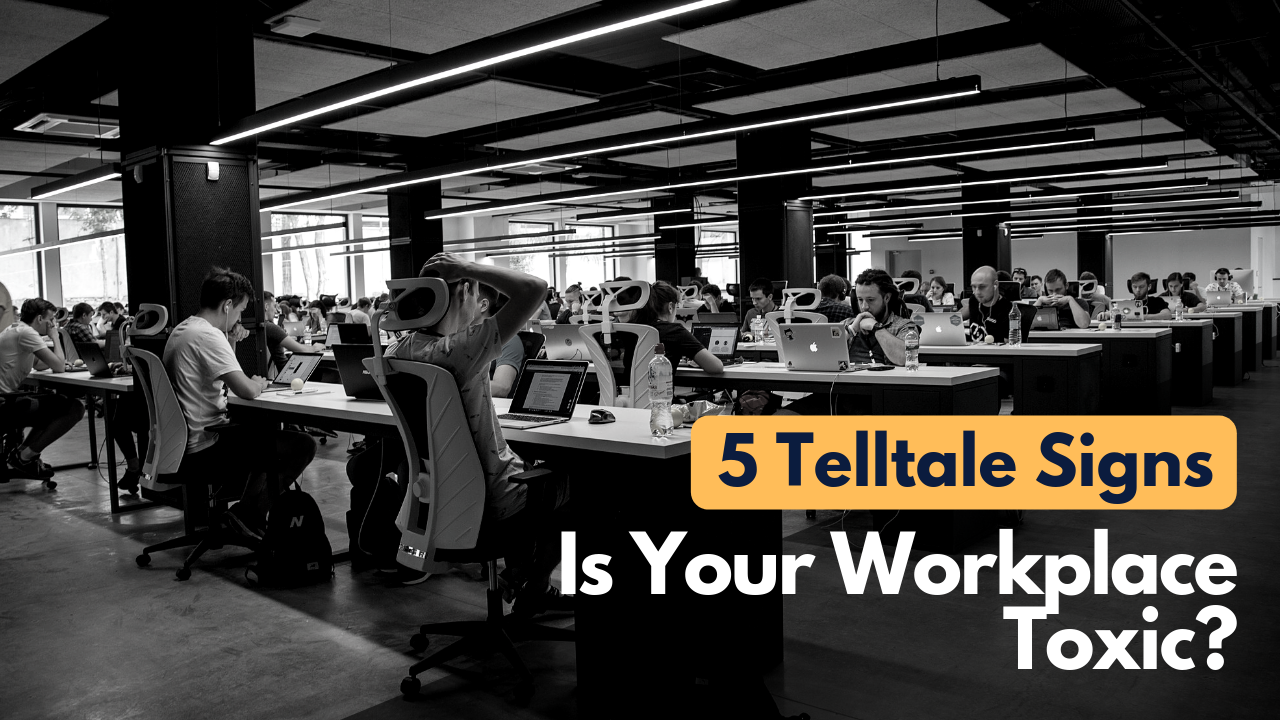- In a world where the office can be a hotel lobby, a mall, or the airport, operators must focus on ways to encourage people to keep returning to their workspace.
- People are looking for experiences that add value to their lives, which places high importance on creating human-centric workplace experiences.
- You may have the best design and amenities, but your culture could be putting people off. Here are 5 telltale signs of a toxic work environment, and what to do about them.
Technology has, to a certain extent, negated the need to go to the office, which is why creating a workplace environment that people want to go to has become all the more important. There’s also the fact that many companies have started to implement a variety of flexible working policies, allowing employees to work from home, a coffee shop, a coworking space, or wherever they want.
So in a world where the office can be a hotel lobby, a local cafe, a mall, the park, or the airport, what can you do to encourage people to want to go to your workspace?
Rather than products or services, people are looking for experiences that add value to their lives. So in order to entice people to your workspace and to keep them coming back, you need to create a human-centric workplace experience.
There are various ways to go about it. Here are some key elements:
- Careful, well-thought-out design. Great workplace design today provides choice to users (a combination of “me” vs “we” spaces) that inspires them to get work done. It also encourages them to engage with the community. Important workplace design elements that need to be considered include ergonomic furniture, access to natural light, and sound levels (how sound travels through your space).
- Amenities and additional services. Most adults spend the vast majority of their time in the workplace, so you want to make it a place that’s welcoming, warm, and “homely.” One way to do this is by offering services and amenities that can enhance the overall experience. For instance, provide coffee or tea, offer healthy snacks, and have a fully stocked kitchen — think of the types of amenities hotels typically offer.
- Consider elements that can’t be seen but can be felt. Elements like air quality, thermal comfort, and noise levels.
The right work environment will not only inspire people to work, but it will also help them to feel good and encourage them to follow healthier lifestyles.
However, another key element to a successful workplace is its community, its culture. If you have the best possible design and amenities, but your overall environment is toxic, then people won’t be coming back to your space. What’s worse is that toxic work environments negatively impact a person’s physical and mental health.
5 Signs of a Toxic Workplace
1. High Turnover of Staff or Workplace Members
The number one sign that your workplace culture might be turning sour is if you have a high churn rate of flexible workspace members and/or staff. It’s simple — when your workplace environment doesn’t add value and it’s causing a negative impact, people will leave. If this is happening, then you need to make sure you reach out to people and ask if there is something you, as an employer or a workplace provider, need to work on.
2. Gossip and Rumors
People will always talk, but when it feels like everything that people talk about is rumors or gossip, then you have a problem, especially if it seems that a certain person or group has it out for someone in particular.
3. Lack of Enthusiasm
This doesn’t mean that everyone has to be in a happy mood all day, every day. Mostly it’s about gauging how the entire work atmosphere feels. Do you see people smiling? Do they eagerly participate in some of your activities? Are there upbeat conversations happening somewhere? If yes, then you’re good. If no, then you could be looking at a toxic environment.
*This doesn’t mean that all employees or workspace members should participate in all activities. But if you notice a repeating pattern whereby few, or no people at all are showing up or participating, it’s a sign that something’s off.
4. Poor Communication
Do employees or workspace members regularly communicate with you? Do you regularly communicate with them? If the answer is no, then you have a communication problem that can eventually turn a work environment toxic, especially when it comes to sharing valuable information like new policies, rules, or important announcements.
5. People Leave in a Worse Mood or Are Constantly Sick
If you notice people often leaving the workplace in a bad mood, then it could be trouble. Though we all have bad days, when a bad day turns into weeks and then months, something is definitely not right. The same goes if people keep getting sick. Though sometimes seasonal allergies are to blame, other times it could be ongoing stress that is causing an illness.
People are looking for experiences that add value to their lives, and considering we spend a lot of time at work, it should only be natural that the workplace is somewhere that we want to be in, that makes us feel good, and that positively impacts other areas of our lives.
When a workplace fails to achieve this, companies risk losing valuable talent and clients.


 Dr. Gleb Tsipursky – The Office Whisperer
Dr. Gleb Tsipursky – The Office Whisperer Nirit Cohen – WorkFutures
Nirit Cohen – WorkFutures Angela Howard – Culture Expert
Angela Howard – Culture Expert Drew Jones – Design & Innovation
Drew Jones – Design & Innovation Jonathan Price – CRE & Flex Expert
Jonathan Price – CRE & Flex Expert











